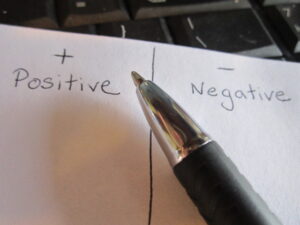
A few summers ago, my husband and I tilled our little garden, shoveled on the compost, and planted row after row of green beans. I could almost see the jars of beans lining my pantry shelves, making me look so domestic when my neighbors came over. But as the summer progressed it became obvious that green beans were not to be. Instead, we got a bumper crop of unplanned pumpkins. Apparently, seeds from the rotten Halloween pumpkins we chucked in the compost bin the previous fall had found a fertile home and the little buggers popped up all over the garden. At first, we pulled them up. How dare they! It was green beans I wanted, not pumpkins. But when it became apparent they were the only plants coming up at all, we surrendered to the powers that be and let them grow. They were the sweetest, yummiest little volunteers! It’s probably the only time in my life I got sufficient Vitamin A, and I had a blast showing my kids that pumpkin pie comes from … gasp … pumpkins … instead of the freezer section.

Lessons in family relationships can be learned in many odd places, including the understated compost bin. I believe the ultimate mistake of family life is spending our energy dwelling on what we want to happen (the green beans), and not rejoicing in the good that is happening right in front of us (the pumpkins). There is one parenting strategy that should have its own late-night infomercial. It could promise life-changing results in just days with no money down. It is this: Focus on the Good. It is way too easy to spend most of our time as parents nagging, criticizing, and lecturing—focusing on what is wrong—while we miss the chance to pay attention to the beautiful, obedient, and sweet things our kids do. Just pick an random mother to watch with her kids at a playground. The children might take turns on the swings, pick up trash, let someone go first down the slide, make strides towards global peace, and do twenty-nine other appropriate, praise-worthy things—and be virtually ignored. Then, one of them might throw a piece of bark or demand a sand bucket from another kid—and the world comes crashing to an end. Mom is all over it.
Glenn Latham, in his classic book “The Power of Positive Parenting” gives this great advice:
Without a doubt, the key to developing high quality human behavior is though the selective, positive reinforcement of appropriate behavior. . . .When I talk about the selective, positive reinforcement of appropriate behaviors I mean simply that we as parents must be constantly aware of the behaviors of our children and to carefully select and skillfully reinforce those behaviors that should be strengthened. (p. 52)
He suggests that parents make sure to have several Positive Interactions with each child every hour they are together. Positive Interactions do not have to be long and flowery speeches; in fact they shouldn’t be. Just a wink, pat on the back, quick thank-you or small compliment is enough. The great thing about this technique is that is can begin working immediately, even if you have just recently morphed back from being the Mommy Monster, or if everyone is stuck in a cycle of criticism and harshness. You can immediately change the climate in the room by expressing appreciation, smiling, saying something encouraging, and looking for the good. And if you just talk nice, your family will never misbehave again, right? If only! We will talk about discipline strategies in other posts, because every child is going to need them (and, frankly, some kids need them quite often). But I strongly believe there isn’t a punishment effective enough, or a discipline technique clever enough to make any real and lasting improvement without a fun, warm, nurturing, positive atmosphere. So, remember lessons from the compost bin and Focus on the Good.
 Try it Today: For at least two days, keep a chart of your interactions with family members. Put a + sign at the top of one side of the page, and a – sign on the other side. Every time you tell kids to get their feet off their brother’s head, beg them to quit singing that Justin Bieber song, or say any other negative remark, put a mark under the negative sign. Each time you say thank-you, show physical affection, or give positive attention to your child, put a mark under the plus sign. It won’t take more than a few seconds. How is your balance? Do you feel a difference in your home depending on whether the positives or negatives are winning? Next week, we’ll talk about how to remember to reinforce appropriate behaviors, and the “magic” ratio of positive reinforcement.
Try it Today: For at least two days, keep a chart of your interactions with family members. Put a + sign at the top of one side of the page, and a – sign on the other side. Every time you tell kids to get their feet off their brother’s head, beg them to quit singing that Justin Bieber song, or say any other negative remark, put a mark under the negative sign. Each time you say thank-you, show physical affection, or give positive attention to your child, put a mark under the plus sign. It won’t take more than a few seconds. How is your balance? Do you feel a difference in your home depending on whether the positives or negatives are winning? Next week, we’ll talk about how to remember to reinforce appropriate behaviors, and the “magic” ratio of positive reinforcement.
Falling in Love with Your Family, Written by Alison
Comments are closed.